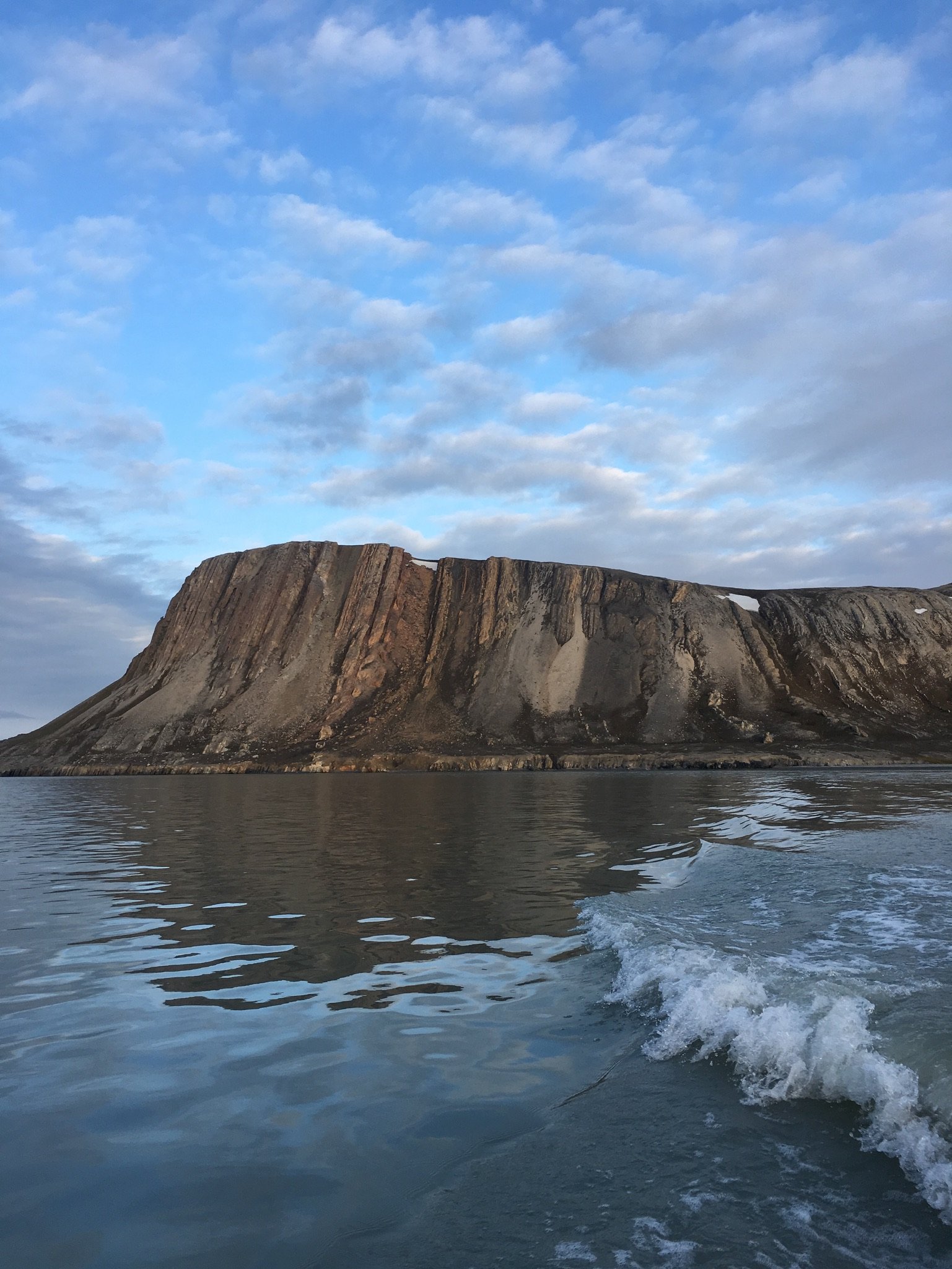
Tonian Fossils of Svalbard
Credit: Ross Anderson
The origin of eukaryotes during the Paleoproterozoic (2.5-1.6 billion years ago) was a turning point that fundamentally transformed the Earth system towards the modern biosphere. Yet the microfossil record demonstrates that it was not until the Neoproterozoic (1.0-0.5 billion years ago) that these eukaryotes underwent significant diversification, evolving several key biological innovations such as biomineralisation and predation.
Despite the paucity of the early fossil record, organic walled microfossils preserved in mudstones can lend incredible insight into the tempo and ecology of the Neoproterozoic radiation of eukaryotes. Lagerstätte provide the best-preserved specimens that enable both phylogenetic and ecological inferences.
My research with Dr Ross Anderson, whilst at the University of Oxford involved re-exploring the iconic Svanbergfjellet Formation of Svalbard, Norway, resampling the fossiliferous shales of the Algal Dolomite member at a cm-scale stratigraphic resolution. The Svanbergfjellet Formation is one of the most diverse Proterozoic assemblages yet documented and is host to delicate eukaryotic specimens. These include multicellular fossils that represent the earliest examples of green algae, predating their apparent rise to dominance in the oceans as inferred by the organic biomarker record by 100s of millions of years.
Check out our new publication here!